Top Innovations in Offshore Wind Farms Explained
Category: Renewable Energy
Discover the Latest Innovations Powering Offshore Wind Farms
Whether you're a curious beginner or an electrical engineer diving into renewable energy, understanding the latest innovations in offshore wind farms is key to grasping how this technology is reshaping energy production. Offshore wind farms have evolved rapidly, leveraging breakthroughs that enhance efficiency, reduce costs, and address environmental challenges. You may have landed here because you want clear, in-depth insights into how cutting-edge turbines, floating platforms, grid integration, and digital technologies come together to transform offshore wind power. This post uniquely blends accessible explanations with technical depth, catering perfectly to your expertise and curiosity. Instead of vague overviews, you'll find a structured breakdown of engineering advances and scientific principles behind the most promising innovations. By the end, you’ll feel confident about the technology shaping tomorrow’s energy landscape with real-world applications and future outlooks. Let’s explore how innovation drives offshore wind to become a cornerstone of sustainable energy worldwide.
- Discover the Latest Innovations Powering Offshore Wind Farms
- Overview of Offshore Wind Farms: Technology and Growth Trends
- Advancements in Turbine Design and Materials
- Floating Offshore Wind Technology: Unlocking Deeper Waters
- Innovative Foundations and Installation Methods
- Grid Integration and Energy Storage Solutions
- Digitalization and Smart Monitoring Systems: Harnessing AI and IoT for Offshore Wind Optimization
- Environmental and Wildlife Impact Mitigation in Offshore Wind Farms
- Hybrid Offshore Renewable Systems: Maximizing Yield and Grid Stability
- Cost Reduction and Economic Innovations in Offshore Wind
- Future Outlook: Next-Gen Innovations and Challenges in Offshore Wind
Overview of Offshore Wind Farms: Technology and Growth Trends
Offshore wind farms harness the power of strong, consistent sea breezes through arrays of large-scale wind turbines installed in coastal waters or deeper offshore locations. These turbines, often towering over 200 meters tall with rotor diameters exceeding 150 meters, convert kinetic wind energy into electricity that feeds into onshore power grids. The layout of offshore wind farms is optimized for maximum aerodynamic efficiency and minimal wake interference, typically featuring turbines spaced several rotor diameters apart in strategic grid-like or staggered formations. This ensures a balanced capture of wind resources while maintaining structural stability amidst challenging marine environments.
The scope of offshore wind development has expanded dramatically in the past decade, driven by global commitments to reduce carbon emissions and diversify renewable energy portfolios. Regions including Europe, East Asia, and the United States have seen exponential growth in offshore capacity, with projects moving further offshore into deeper waters thanks to advancements in floating foundation technology and subsea cabling. This geographic and technological expansion heightens the complexity of construction, maintenance, and grid integration, underscoring the critical role of continuous innovation. As turbines grow larger and farms increase in scale, breakthroughs in materials science, digital monitoring, and aerodynamic design are essential to improving performance, reducing levelized costs of energy (LCOE), and ensuring resilience in harsh marine conditions. The evolving landscape of offshore wind power not only deepens the potential for clean energy but also demands sustained technical ingenuity to meet future market and environmental challenges.
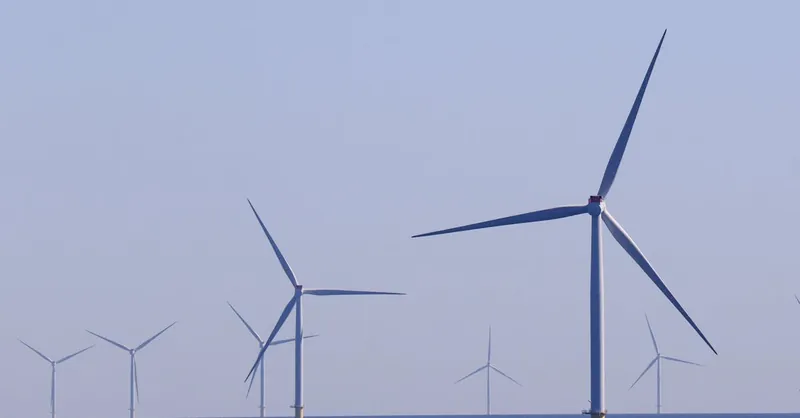
Image courtesy of Damir K .
Advancements in Turbine Design and Materials
One of the most significant drivers of efficiency and cost reduction in offshore wind farms is the rapid innovation in turbine design and materials. Modern turbines are pushing the limits of scale with larger blade designs, often exceeding 100 meters in length, enabling turbines with rotor diameters over 200 meters. These expansive blades capture a greater sweep area, which directly translates to increased energy capture from lower wind speeds, boosting overall power output. The challenge of managing such large structures in harsh marine environments has led to breakthroughs in lightweight composite materials, such as carbon fiber-reinforced polymers and advanced fiberglass laminates. These composites balance the need for strength, flexibility, and corrosion resistance, allowing blades to maintain durability without excessive weight that could compromise mechanical integrity or increase load on turbine components.
In addition to size and materials, aerodynamic improvements have been crucial. Innovations like optimized blade twist, tapering, and the incorporation of smart trailing-edge flaps or vortex generators reduce aerodynamic drag and mitigate turbine noise and vibration. These design features improve not only efficiency but also structural longevity, decreasing maintenance frequency and downtime. Moreover, adaptive blade pitch and real-time control systems enhance performance under varying wind conditions, maximizing output while protecting turbine components from extreme stress. Collectively, these advancements in blade engineering and materials science empower offshore wind turbines to achieve higher capacity factors and longer operational lifespans, cementing their role as a cornerstone technology in the sustainable energy transition.
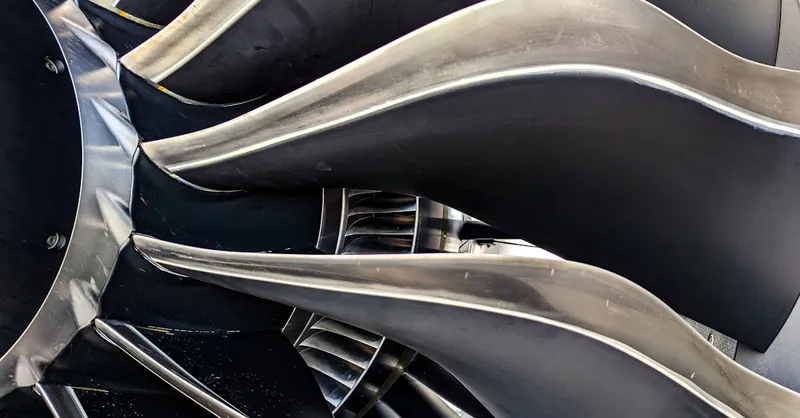
Image courtesy of Joerg Mangelsen
Floating Offshore Wind Technology: Unlocking Deeper Waters
As fixed-bottom offshore wind farms approach their geographical and economic limits—typically in waters up to 60 meters deep—floating offshore wind technology has emerged as a transformative innovation expanding deployment into previously inaccessible, deeper waters. Floating platforms enable turbines to harness the stronger, more consistent winds found far offshore, significantly increasing energy yield while minimizing visual and environmental impacts near coastlines. This breakthrough is pivotal for countries with deep continental shelves, such as Japan, Norway, and parts of the United States, where seabed conditions challenge traditional foundations.
Key Floating Platform Designs
Floating offshore wind platforms are engineered to provide stable support for massive turbines while withstanding ocean dynamics like waves, currents, and storms. The three primary platform types dominate current developments:
-
Spar Buoy Platforms
Spar designs feature a long, vertical cylindrical hull submerged deep below the water surface, anchored by heavy ballast to ensure stability. This type excels in deep waters (100+ meters) due to its minimal wave interaction and excellent motion damping. The spar design benefits from relatively simple mooring systems but can be more challenging to install because of its size and draft. -
Semi-Submersible Platforms
Semi-submersibles consist of multiple interconnected columns and pontoons that provide buoyancy and stability. Their wide footprint reduces heave, pitch, and roll, making them versatile across various depths and sea conditions. Semi-submersibles are easier to tow and install due to shallower drafts compared to spar buoys, and their modular design allows easier scaling and maintenance. -
Tension Leg Platforms (TLP)
TLPs rely on taut vertical mooring lines anchored to the seabed, providing stability through tension rather than ballast. This design offers very low vertical motion, advantageous for the sensitive components of wind turbines. Though potentially more complex and costly to deploy, TLPs enable precise control over platform dynamics, improving turbine performance and durability in deep or ultra-deep waters.
The rise of these floating foundation types is revolutionizing offshore wind deployment by overcoming traditional depth constraints, opening vast new areas with optimal wind resources. Coupled with advances in mooring technologies and dynamic cabling solutions, floating offshore wind farms promise not only to increase the capacity and geographic reach of renewable energy but also to reduce costs over time, accelerating the global transition to sustainable power systems.
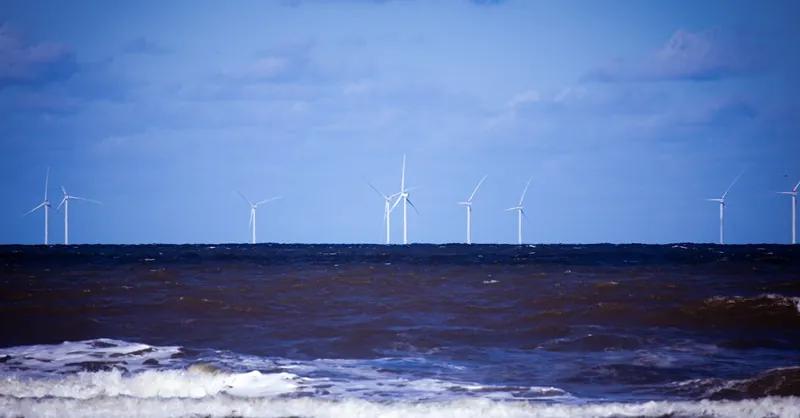
Image courtesy of Patrick
Innovative Foundations and Installation Methods
The foundation technology and installation processes for offshore wind farms have seen remarkable innovations aimed at enhancing stability, reducing costs, and accelerating project timelines. Traditional foundations like monopiles remain dominant due to their simplicity and proven reliability, especially in shallow to medium-depth waters. Monopiles are large-diameter steel tubes driven deep into the seabed, offering robust support for turbines up to 50 meters water depth. Recent advancements in monopile design include optimized geometries and improved steel grades, which allow for larger turbines and deeper installations while minimizing material usage and fabrication expenses.
Complementing monopiles, suction bucket foundations have emerged as a groundbreaking alternative harnessing principles of suction and soil suction to anchor turbines efficiently. These large, hollow, cylindrical structures are lowered to the seabed and then evacuated to create negative pressure, effectively "sucking" the foundation firmly into place. Suction buckets offer several key advantages: they significantly reduce underwater noise during installation compared to pile driving, minimize environmental disturbance, and allow for rapid, precise placement. Their design flexibility suits a range of seabed conditions, including soft soils where traditional piles might struggle, making them a growing choice for offshore projects in sensitive or complex marine environments.
On the installation front, automation and digitalization technologies are transforming how foundations and turbines are deployed offshore. Advanced autonomous vessels and remotely operated vehicles perform seabed surveys, foundation positioning, and underwater inspections with higher accuracy and efficiency. Automated heavy-lift cranes and dynamic positioning systems reduce human error and accelerate installation cycles, dramatically cutting operational costs and weather-related downtime. Additionally, predictive analytics integrated with real-time monitoring enable adaptive project scheduling, further optimizing resource allocation and reducing overall timelines. This synergy of innovative foundation solutions and cutting-edge installation automation is pivotal to driving down capital expenditure (CAPEX) and boosting the scalability of offshore wind farms, reinforcing their competitiveness in global energy markets.
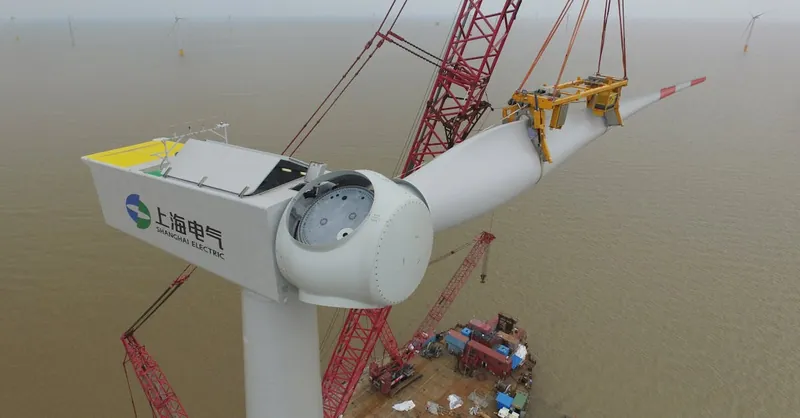
Image courtesy of Greece-China News
Grid Integration and Energy Storage Solutions
Integrating offshore wind farms into the power grid presents unique challenges due to the vast distances between generation sites and onshore consumption centers, as well as the variable nature of wind energy. Recent innovations in high-voltage direct current (HVDC) transmission have revolutionized grid connection by enabling efficient, high-capacity power transfer over hundreds of kilometers with minimal losses. Unlike traditional alternating current (AC) systems, HVDC infrastructure reduces reactive power issues and allows for precise control of power flow, which is critical for stabilizing grids with high shares of intermittent renewables. Modern HVDC converter stations, including Voltage Source Converters (VSCs), facilitate multi-terminal connections and seamless integration of offshore wind farms into existing network architectures.
Complementing HVDC systems, the deployment of advanced offshore substations has become a central innovation. These substations aggregate power from arrays of turbines, stepping up voltage for transmission and incorporating smart control technologies to optimize output and maintain grid reliability. Innovations such as modular and lightweight designs, digital monitoring, and predictive maintenance significantly enhance operational efficiency while reducing installation complexity and cost.
To address the intermittency of wind power and improve grid resilience, offshore wind farms are increasingly being coupled with energy storage solutions. Battery energy storage systems (BESS) integrated near or within offshore substations are gaining traction, offering rapid response capabilities to smooth out fluctuations and provide ancillary grid services like frequency regulation. Additionally, cutting-edge projects are exploring the coupling of offshore wind with green hydrogen production, utilizing surplus electricity to electrolyze seawater and generate hydrogen—an energy carrier with substantial potential for sector coupling and long-term storage. This hydrogen can be stored, transported, or converted back to electricity, thus enabling offshore wind farms to function as flexible, dispatchable power sources.
Together, these innovations in HVDC transmission, offshore substations, and integrated storage—ranging from batteries to green hydrogen—are crucial for unlocking the full potential of offshore wind energy. They not only enable large-scale deployment far from shore but also support the transition toward resilient, low-carbon power grids worldwide.
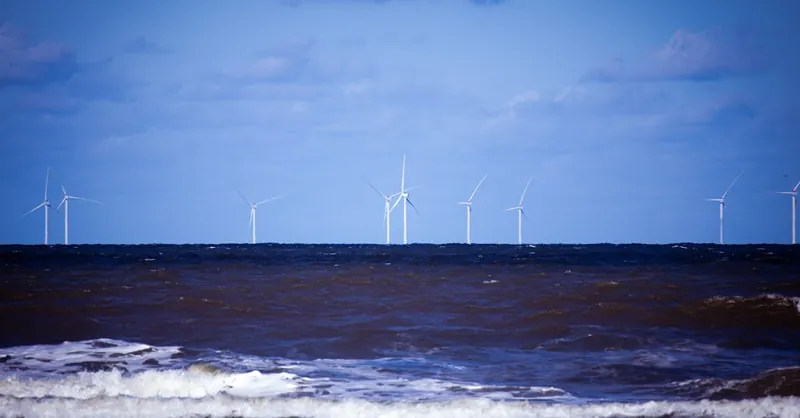
Image courtesy of Patrick
Digitalization and Smart Monitoring Systems: Harnessing AI and IoT for Offshore Wind Optimization
The integration of digitalization, AI, and IoT sensors is revolutionizing offshore wind farms by transforming how turbine performance and maintenance are managed. Smart monitoring systems leverage a vast network of embedded sensors throughout turbine components—from blades and gearboxes to generators and foundations—to continuously collect real-time data on operational conditions, structural health, and environmental factors. This granular data is then processed with advanced artificial intelligence algorithms and machine learning models to detect subtle performance deviations and anticipate potential faults before they escalate, enabling predictive maintenance strategies that reduce unplanned downtime and extend turbine lifespan.
Remote monitoring platforms aggregate data at centralized control centers, where AI-driven analytics optimize turbine operational parameters dynamically based on real-time wind conditions and system health. This digital feedback loop enhances energy capture efficiency by adjusting blade pitch, yaw, and generator torque proactively. Moreover, IoT-enabled condition monitoring improves asset management by providing detailed insights into wear patterns, corrosion rates, and vibration signatures under harsh offshore environments. The result is a more resilient, cost-effective offshore wind operation that minimizes costly manual inspections and weather-dependent maintenance campaigns.
Key benefits of smart digitalization in offshore wind include:
- Enhanced energy production through real-time performance optimization.
- Reduced operational expenditure (OPEX) via predictive maintenance and early fault detection.
- Improved safety by minimizing onsite personnel requirements and enabling remote diagnostics.
- Extended turbine lifespan enabled by precise condition monitoring and adaptive control.
- Data-driven decision-making supporting future design improvements and operational strategies.
As offshore wind farms grow in size and complexity, these innovations in digitalization and smart monitoring are essential for unlocking their full potential, driving down overall costs, and supporting the scalable integration of renewable energy into global power systems.
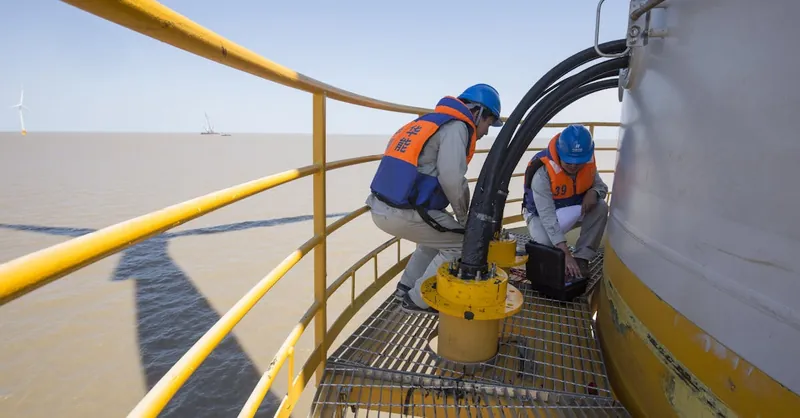
Image courtesy of Greece-China News
Environmental and Wildlife Impact Mitigation in Offshore Wind Farms
As offshore wind farms expand their footprint, environmental and wildlife impact mitigation has become a critical focus area to ensure that renewable energy development coexists harmoniously with marine ecosystems. Modern offshore wind projects employ a suite of advanced technologies and strategies designed to minimize ecological disruption and protect vulnerable species such as seabirds, bats, and marine mammals.
Radar-Based Bird and Wildlife Detection Systems
One of the most effective innovations for reducing avian collisions with turbines is the use of radar bird detection systems. These sophisticated radar units continuously monitor bird flight paths in real-time, tracking migration patterns and identifying high-risk periods for bird-turbine interactions. When radar detects significant bird activity within or approaching the wind farm’s rotor sweep area, the system can automatically trigger selective turbine curtailment, temporarily stopping or slowing turbines to prevent collisions. This dynamic, data-driven approach significantly reduces bird fatalities compared to traditional static mitigation methods.
In addition to radar, emerging machine learning algorithms and thermal imaging cameras enhance wildlife detection accuracy by distinguishing between species and behaviors, allowing for more targeted and efficient mitigation. These systems are increasingly integrated into offshore wind farm monitoring platforms, contributing to smarter, wildlife-friendly turbine operations without compromising energy production.
Noise Reduction Techniques for Marine Life
Underwater noise generated by turbine construction and operation can adversely affect sensitive marine mammals like whales and dolphins. To address this, offshore wind developers implement innovative noise reduction technologies, particularly during foundation installation stages. For example:
- Bubble curtains create a barrier of air bubbles around pile-driving sites, absorbing and diffusing sound waves to reduce underwater noise levels.
- Vibro-piling techniques use vibrating hammers that gently penetrate the seabed with significantly less noise than traditional impact pile driving.
- Suction bucket foundations also contribute by drastically minimizing pile-driving noise due to their installation method, which relies on controlled suction rather than heavy hammer strikes.
Operational turbines likewise benefit from hydrodynamic blade designs engineered to minimize cavitation and flow noise, helping to reduce the chronic acoustic impact on marine environments.
Holistic Ecological Monitoring and Adaptive Management
Beyond technological tools, comprehensive environmental monitoring programs are integral to offshore wind farms. Baseline ecological surveys combined with continuous post-construction monitoring enable developers to assess long-term impacts on local wildlife populations and habitats. This data supports adaptive management strategies that refine operational practices dynamically—such as seasonal curtailments during critical migration periods or implementing exclusion zones around sensitive habitats—to further mitigate ecological risks.
By integrating advanced detection technologies, noise suppression methods, and proactive monitoring, offshore wind farms increasingly align with sustainable development goals, balancing ambitious renewable energy growth with the preservation of marine biodiversity and ecosystem health. These innovations not only enhance environmental stewardship but also contribute to the social license and regulatory acceptance essential for the industry's continued expansion.

Image courtesy of Patrick
Hybrid Offshore Renewable Systems: Maximizing Yield and Grid Stability
As the offshore renewable energy sector evolves, hybrid offshore systems—which combine offshore wind with complementary technologies such as solar, wave energy, or energy storage—are emerging as innovative solutions to boost total energy output and enhance grid stability. These hybrid projects leverage the complementary nature of different renewable resources and storage capabilities to optimize power generation, reduce intermittency, and maximize asset utilization in complex marine environments.
Combining Offshore Wind with Solar and Wave Energy
Hybrid offshore platforms integrating solar photovoltaic (PV) arrays alongside wind turbines capitalize on differing resource profiles. While offshore wind farms generate the most power during windy, often less sunny periods, offshore solar can provide daytime generation during calmer wind conditions, effectively smoothing the combined power output. Similarly, incorporating wave energy converters taps into the constant kinetic energy of ocean waves, delivering a more consistent power supply even during periods of low wind or solar irradiance. This multi-resource approach enhances overall capacity factors and reduces the volatility of renewable output fed into transmission networks.
Integration of Advanced Energy Storage Systems
Effective integration of energy storage solutions within hybrid offshore systems is pivotal for buffering variability and stabilizing power delivery. Battery energy storage systems (BESS), particularly lithium-ion technologies, allow temporary energy stockpiling, enabling offshore installations to shift or smooth output in response to grid demands. Beyond batteries, emerging green hydrogen production through electrolysis using surplus renewable power is gaining traction. This process stores energy in chemical form, offering scalable, long-duration storage and flexible energy use options including power-to-gas, transportation fuel, and industrial feedstock.
Benefits of Hybrid Offshore Renewable Systems
- Optimized Energy Yield: Diversifying energy sources mitigates downtime and taps into multiple marine resources, increasing total renewable power generation.
- Improved Grid Reliability: Hybrid systems provide more predictable and stable power profiles, easing integration with onshore grids and reducing reliance on fossil-fuel backup.
- Enhanced Economic Viability: Shared infrastructure like platforms, substations, and cabling decreases capital expenditure (CAPEX) and operational costs (OPEX) per unit of energy produced.
- Reduced Environmental Footprint: By co-locating technologies, hybrid projects minimize seabed disturbances and maritime space usage compared to separate developments.
These innovations in hybrid offshore renewable systems represent the next frontier in marine energy, aligning with global decarbonization goals by unlocking higher efficiency and resilience from offshore power generation assets. As research advances and pilot projects scale, hybrid approaches are poised to play a critical role in the sustainable energy transition.
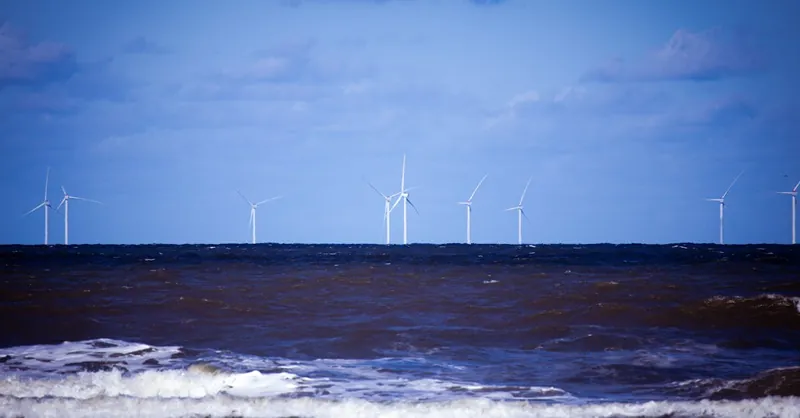
Image courtesy of Patrick
Cost Reduction and Economic Innovations in Offshore Wind
Driving down costs is essential to making offshore wind a globally competitive renewable energy source. Recent breakthroughs in supply chain optimization, modular manufacturing, and logistics improvements are playing a pivotal role in reducing both capital expenditure (CAPEX) and operational expenditure (OPEX) of offshore wind farms, accelerating their deployment and market expansion.
New Supply Chain Models Enhancing Efficiency
Traditional offshore wind supply chains often suffer from fragmented coordination, long lead times, and high redundancy. To address this, integrated supply chain models are emerging that emphasize:
- Vertical integration – Manufacturers and developers consolidate production stages, improving communication and minimizing delays between turbine component fabrication, assembly, and installation.
- Localization strategies – Developing regional manufacturing hubs close to offshore sites reduces transportation costs and logistical complexity, while supporting local economies.
- Collaborative procurement – Joint purchasing agreements among multiple projects leverage economies of scale, reducing costs for raw materials, components, and specialized vessels.
These innovations streamline sourcing and production workflows, enabling faster turnaround times and better risk management throughout project lifecycles.
Modular Manufacturing: Scalability and Standardization
The adoption of modular manufacturing techniques is revolutionizing offshore turbine construction. By breaking down complex turbine components and foundation structures into standardized, prefabricated modules:
- Fabrication occurs in controlled factory environments, improving quality and reducing weather-related disruptions.
- Modules can be mass-produced and easily transported on specialized vessels, accelerating offshore assembly processes.
- Standardization enables interchangeability and simplified maintenance, cutting long-term OPEX.
This modular approach significantly lowers manufacturing costs by enhancing repeatability and productivity, while supporting rapid scaling of turbine sizes and farm capacities.
Advanced Logistics and Installation Innovations
Offshore wind logistics traditionally face high costs due to the remote and harsh marine environments. Several economic innovations have emerged to optimize this:
- Use of heavy-lift vessels with dynamic positioning and self-installing platforms reduce reliance on specialized jack-up rigs and shorten installation durations.
- Deployment of digital twin simulations and AI-driven route planning improves vessel scheduling, minimizes weather-related delays, and optimizes cargo handling.
- Implementation of just-in-time delivery systems reduces inventory holding costs at ports and offshore staging areas.
Collectively, these logistics enhancements cut project lead times and lower operational risks, directly translating to cost savings and improved project economics.
The synergy of these cost-reduction strategies—advanced supply chain coordination, modular manufacturing, and optimized logistics—not only drives down the levelized cost of energy (LCOE) for offshore wind farms but also fosters a more resilient and scalable industry infrastructure. As these innovations continue to mature, they will be instrumental in making offshore wind a cornerstone of affordable, sustainable global energy systems.
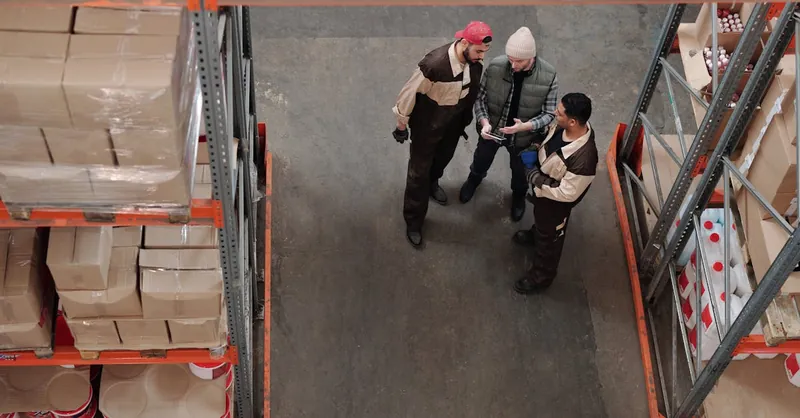
Image courtesy of Tiger Lily
Future Outlook: Next-Gen Innovations and Challenges in Offshore Wind
As offshore wind energy continues its rapid expansion, several next-generation innovations are poised to reshape the industry, addressing existing technical limitations and unlocking new performance frontiers. Among the most promising developments is airborne wind energy (AWE), which harnesses high-altitude winds using tethered drones or kites equipped with turbines. AWE systems aim to capture stronger and more consistent winds far above traditional turbine hub heights, offering potentially transformative gains in capacity factors and reduced material demands. Though still in early stages, advances in control systems, lightweight materials, and autonomous operations are driving pilot projects worldwide, positioning airborne wind as a complement to fixed and floating wind farms, especially in deep offshore or remote locations.
Another breakthrough on the horizon is the integration of superconducting generators in offshore turbines. These generators, operating at cryogenic temperatures, substantially reduce electrical losses and enable lightweight, compact designs that can handle higher power densities. By decreasing generator mass and improving efficiency, superconducting technology can support the next wave of ultra-large turbines, surpassing the 15 MW capacity threshold and facilitating deeper offshore deployment with lower structural loads. Ongoing research focuses on reliable cooling systems, material robustness, and cost-effective manufacturing to scale this innovation from laboratory to commercial viability.
Policy and Market Drivers Shaping the Future
Beyond technology, policy frameworks and regulatory developments will critically influence offshore wind’s trajectory. Ambitious government targets for decarbonization are fostering expansive offshore wind zoning and streamlined permitting processes, accelerating project approval timelines. Initiatives promoting cross-border grid interconnections and market coupling enable more efficient power trade and grid balancing, enhancing offshore wind’s economic competitiveness. Additionally, evolving subsidy models are shifting towards auction systems and contract-for-difference mechanisms that incentivize cost reductions and innovation.
Despite these advances, several challenges remain. The scaling of floating foundations calls for further standardization and mass production to reduce costs. Grid integration complexity will intensify with rising capacity, necessitating sophisticated grid management and advanced energy storage solutions. Environmental sustainability requirements demand continual improvement in wildlife protection technologies and ecosystem monitoring to maintain the sector’s social license.
In summary, the future of offshore wind is shaped by a convergence of cutting-edge technologies like airborne wind energy and superconducting generators with proactive policy support and market evolution. Together, these elements will drive offshore wind toward higher efficiency, expanded geographic reach, and greater integration within resilient, low-carbon energy systems worldwide.
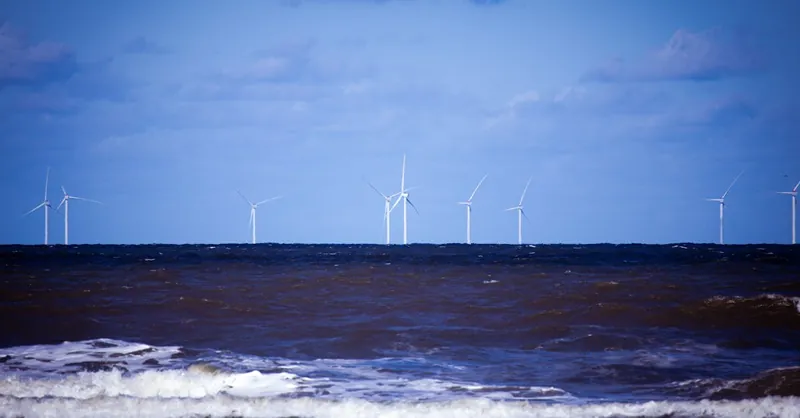
Image courtesy of Patrick
